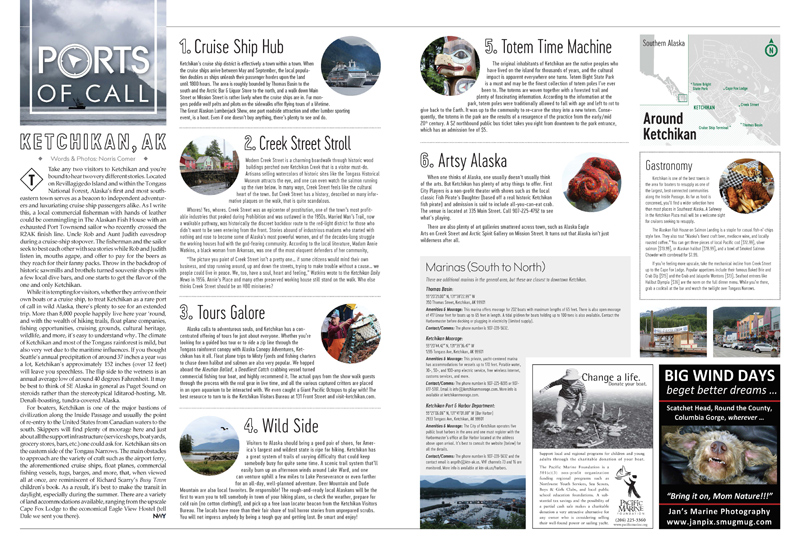Take any two visitors to Ketchikan and you’re bound to hear two very different stories. Located on Revillagigedo Island and within the Tongass National Forest, Alaska’s first and most southeastern town serves as a beacon to independent adventurers and luxuriating cruise ship passengers alike. As I write this, a local commercial fisherman with hands of leather could be commingling in The Alaskan Fish House with an exhausted Port Townsend sailor who recently crossed the R2AK finish line. Uncle Rob and Aunt Judith eavesdrop during a cruise-ship stopover. The fisherman and the sailor seek to best each other with sea stories while Rob and Judith listen in, mouths agape, and offer to pay for the beers as they reach for their fanny packs. Throw in the backdrop of historic sawmills and brothels turned souvenir shops with a few local dive bars, and one starts to get the flavor of the one and only Ketchikan.

While it is tempting for visitors, whether they arrive on their own boats or a cruise ship, to treat Ketchikan as a rare port of call in wild Alaska, there’s plenty to see for an extended trip. More than 8,000 people happily live here year ‘round, and with the wealth of hiking trails, float plane companies, fishing opportunities, cruising grounds, cultural heritage, wildlife, and more, it’s easy to understand why.
The climate of Ketchikan and most of the Tongass rainforest is mild, but also very wet due to the maritime influences. If you thought Seattle’s annual precipitation of around 37 inches a year was a lot, Ketchikan’s approximately 152 inches (over 12 feet) will leave you speechless. The flip side to the wetness is an annual average low of around 40 degrees Fahrenheit. It may be best to think of SE Alaska in general as Puget Sound on steroids rather than the stereotypical Iditarod-hosting, Mt. Denali-boasting, tundra-covered Alaska.
For boaters, Ketchikan is one of the major bastions of civilization along the Inside Passage and usually the point of re-entry to the United States from Canadian waters to the south. Skippers will find plenty of moorage here and just about all the support infrastructure (service shops, boat yards, grocery stores, bars, etc.) one could ask for. Ketchikan sits on the eastern side of the Tongass Narrows.
The main obstacles to approach are the variety of craft such as the airport ferry, the aforementioned cruise ships, float planes, commercial fishing vessels, tugs, barges, and more, that, when viewed all at once, are reminiscent of Richard Scarry’s Busy Town children’s book. As a result, it’s best to make the transit in daylight, especially during the summer. There are a variety of land accommodations available, ranging from the upscale Cape Fox Lodge to the economical Eagle View Hostel (tell Dale we sent you there).



